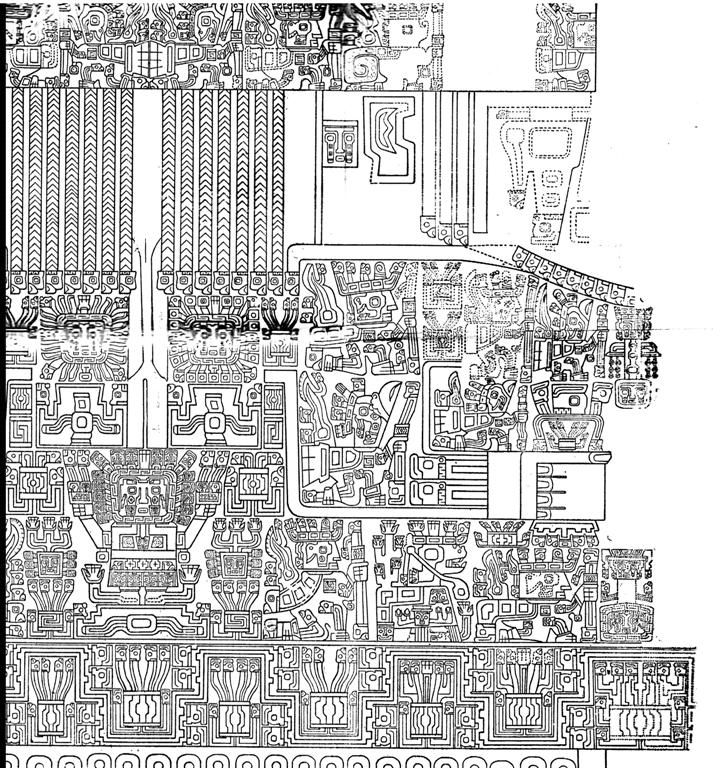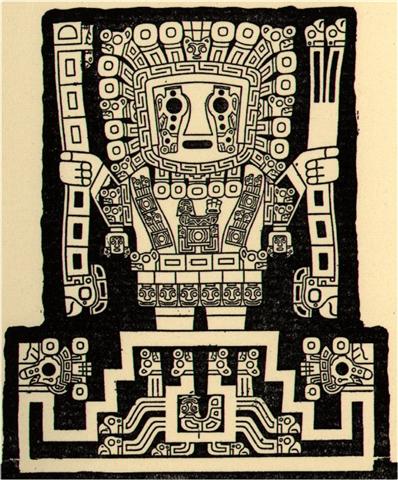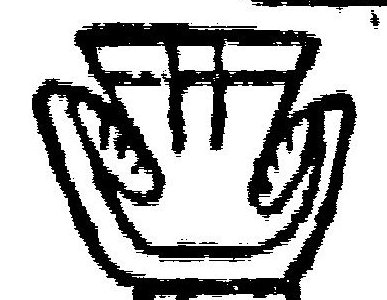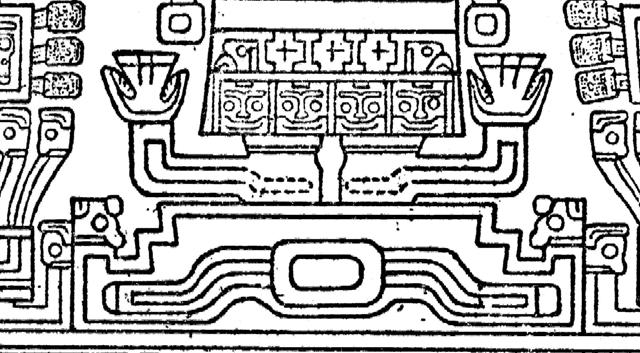On the back side of the Pachamama stone statue in Bolivia there is much to contemplate: 
The central figure (to the left in my copy
of Posnansky's detailed drawing) there is a
figure which I guess represents the day-time
Sun. He is not a weeping god like his night-time
mirror person depicted on the Gateway of the
Sun, but possibly his eyes are sending down
bolts of lightning:
.jpg)
The figure on the Gateway of the Sun is not bilaterally symmetric we can see from his 'staffs'. (And the Mimosa star is not pictured greater than the other 2 stars surrounding Acrux.) Neither is the back side of Pachamama symmetric, because we can immediately see that in the pair of heads above the central 'day-time Sun' the left one has what looks like wings surrounding his face. Above this face with wings are those tresses which counts to ca 215 and above the other face are those tresses which counts to ca 185. The implication seems to be that the 'winged face' represents the back side and the other face the front side of a cycle which is around 400 days (possibly 399 like the syndoc cycle of Jupiter). It was Posnansky who proposed the pair of oppositely oriented figures at left and right in the foundantion of the central god in the Gateway of the Sun were representing the Southern Cross ('time piece') oriented in opposite direactions. ... Whittier said, in his Cry of a Lost Soul: 'The Cross of pardon lights the tropic skies'; which is correct for our day, as it is not now entirely visible above 27º 30' of north latitude. It was last seen on the horizon of Jerusalem - 31º 46' 45'' - about the time that Christ was crucified. But 3000 years previously all its stars were 7º above the horizon of the savages along the shores of the Baltic Sea, in latitude 52º 30' ... Von Humboldt adds: The two great stars, which marks the summit and the foot of the Cross, having nearly the same right ascension, it follows that the constellation is almost perpendicular at the moment when it passes the meridian. This circumstance is known to the people of every nation situated beyond the Tropics or in the southern hemisphere. It has been observed at what hour of the night, in different seasons, the Cross is erect or inclined. It is a time piece, which advances very regularly nearly four minutes a day, and no other group of stars affords to the naked eye an observation of time so easily made. How often have we heard our guides exclaim in the savannahs of Venezuela and in the desert extending from Lima to Truxillo, 'Midnight is past, the Cross begins to bend' ... Crux lies in the Milky Way, - here a brilliant but narrow stream three or four degrees wide, - and is noticeable from its compression as well as its form, being only 6º in extent from north to south, and less in width, the upper star a clear orange in color, and the rest white; the general effect being that of a badly made kite, rather than a cross ... To see these stars it must be night, but I did not think about this obvious fact earlier. I accepted Posnansky's interpretation and did not think independently. Instead my attention was drawn to the fact that the Gateway of the Sun stone portal was not in the east but in the west, which I thought must be wrong. Sun should be depicted in the east where he rose in the mornings turning night into day. But when considering the central figure on the back side of Pachamama, the picture of the 'day-time Sun god' surrounded by 'fire boats'
my problem evaporated.
The central figure on the Gateway of the Sun was in the west because in that direction the Sun had to descend in the evening, thats why he was so sad. |


